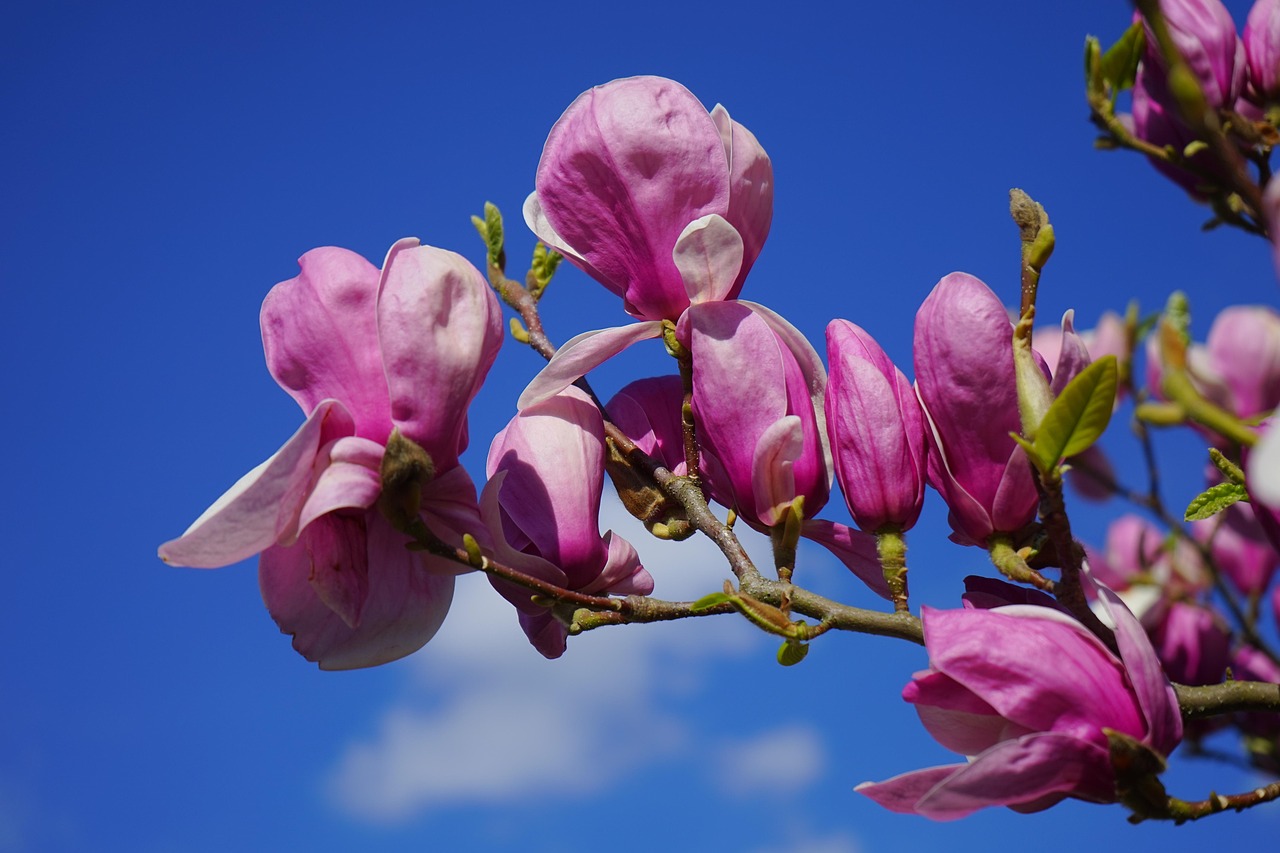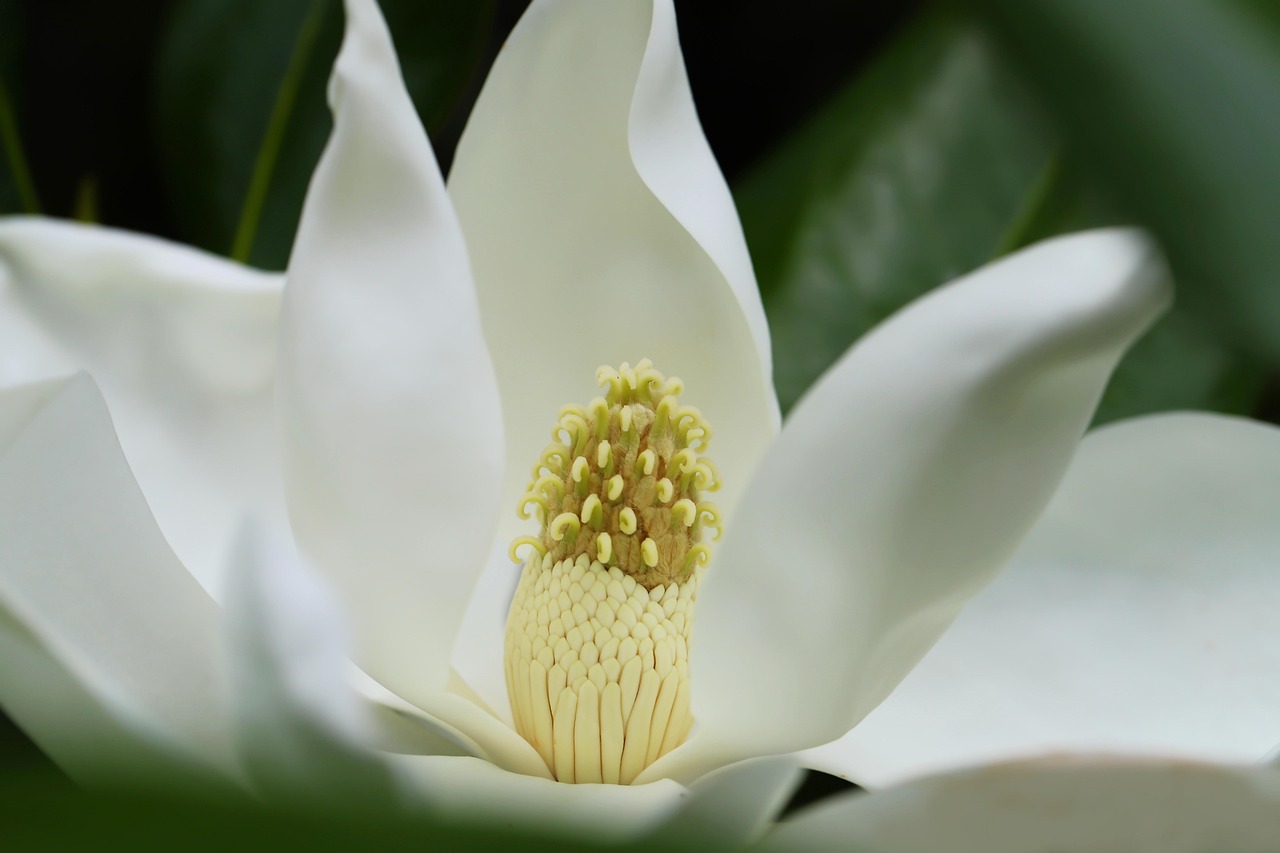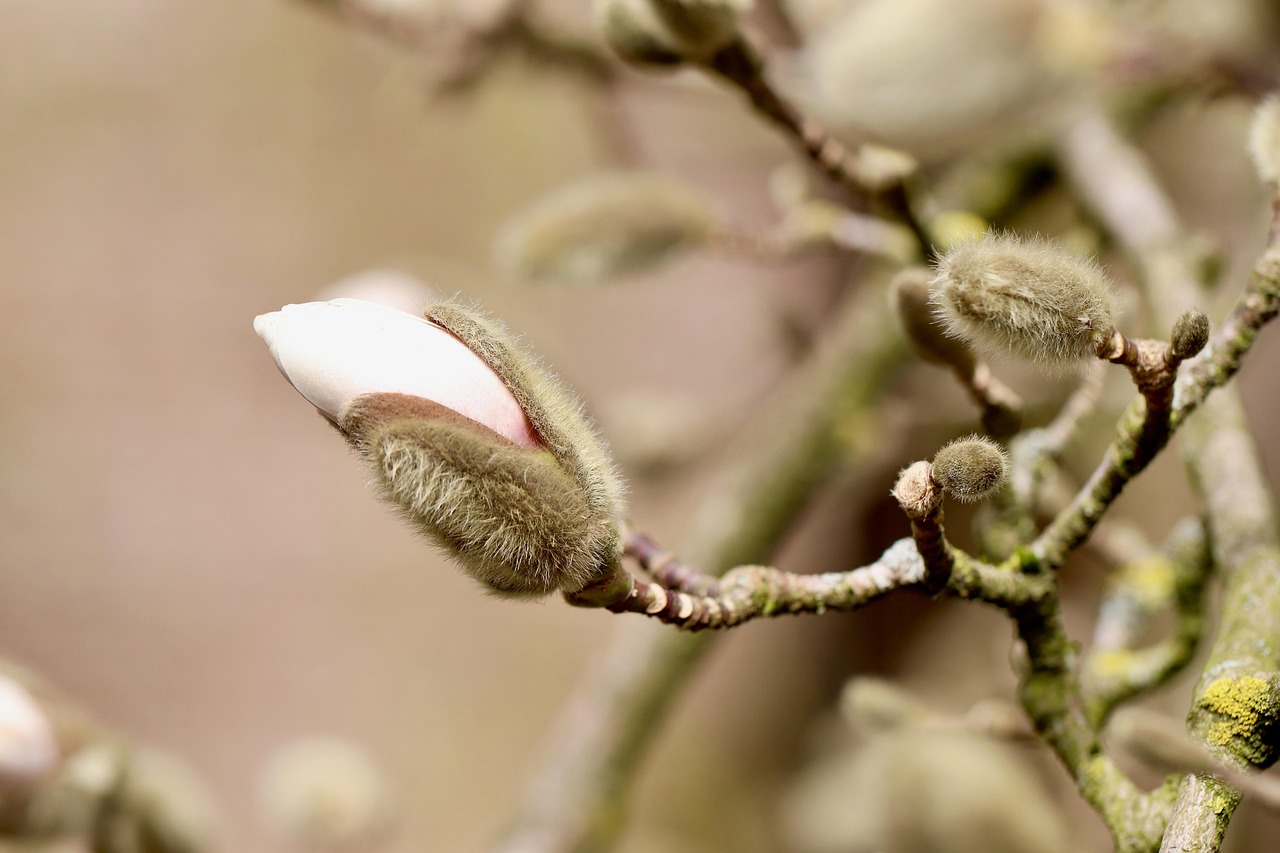Yes, magnolia trees can grow in Wisconsin, but success depends on the specific variety and care provided. With proper selection and cultivation practices, these beautiful trees can thrive in the state’s climate.
Understanding Magnolia Trees

Magnolia trees are cherished for their stunning blooms and unique foliage. They belong to the Magnoliaceae family, which includes over 200 species. These trees are often recognized by their large, fragrant flowers that emerge in spring before the leaves appear. Magnolias can vary greatly in size, shape, and color, making them a versatile choice for many landscapes.
In Wisconsin, the climate presents both opportunities and challenges for growing magnolias. The state experiences cold winters and warm summers, which can affect the growth and survival of these trees. Choosing the right variety is essential for successful cultivation.
Suitable Magnolia Varieties for Wisconsin
Not all magnolia species are suitable for the Wisconsin climate. Some varieties are more resilient to cold temperatures and can adapt better to the local environment. Here are a few magnolia types that are recommended for planting in Wisconsin:
- Star Magnolia (Magnolia stellata): This smaller variety is known for its star-shaped white flowers. It can tolerate colder temperatures and typically grows 15-20 feet tall.
- Saucer Magnolia (Magnolia x soulangeana): This hybrid is popular for its large, pink to white flowers. It can reach heights of 20-30 feet but may need some protection from harsh winds.
- Sweetbay Magnolia (Magnolia virginiana): This tree is valued for its fragrant flowers and can grow in wetter conditions. It typically reaches 10-20 feet in height.
- Cucumber Tree (Magnolia acuminata): Known for its unique cucumber-like fruit, this tree grows tall and can reach heights of 50-80 feet. It prefers a slightly acidic soil.
Planting Conditions for Magnolias
To ensure successful growth of magnolia trees in Wisconsin, it is important to provide the right planting conditions. Here are some factors to consider:
| Factor | Recommendation |
|---|---|
| Soil Type | Well-draining, loamy soil with slight acidity. |
| Sunlight | Full sun to partial shade. |
| Watering | Regular watering during dry spells, especially in the first few years. |
| Spacing | Space trees at least 10-15 feet apart to allow for proper growth. |
Before planting, it’s a good idea to test your soil. This will help determine if any amendments are needed to achieve the ideal conditions for your magnolia trees. Consider adding organic matter to improve soil structure and drainage.
Cultivation Tips for Magnolias in Wisconsin
Successful cultivation of magnolia trees requires attention to detail. Here are some essential tips to keep your magnolias healthy:
- Mulching: Apply a layer of mulch around the base of the tree to retain moisture and suppress weeds. This will also help regulate soil temperature.
- Fertilizing: Use a balanced fertilizer in early spring. Avoid over-fertilizing, as this can lead to excessive leaf growth at the expense of flowers.
- Pruning: Prune lightly after flowering to maintain shape and remove any dead or damaged branches. Avoid heavy pruning, as magnolias bloom on old wood.
- Pest Management: Keep an eye out for common pests such as scale insects or aphids. Use organic methods or insecticidal soap to manage infestations.
By understanding the right varieties and providing suitable conditions, growing magnolia trees in Wisconsin can be a rewarding experience. These trees not only enhance the beauty of your landscape but also contribute to the local ecosystem.
Common Challenges in Growing Magnolias in Wisconsin
While magnolias can thrive in Wisconsin, they do face several challenges due to the region’s climate and soil conditions. Being aware of these potential issues can help gardeners take preventative measures and ensure the healthy growth of their trees.
Cold Weather Stress
Wisconsin winters can be harsh, with temperatures often dropping well below freezing. Young magnolia trees are particularly susceptible to cold weather stress. Here are some strategies to protect your magnolia from frigid temperatures:
- Choose the Right Location: Plant magnolias in a sheltered area, away from harsh winds. South-facing slopes can provide additional warmth during cold snaps.
- Wrap Young Trees: Use burlap or tree wraps to protect young trees from extreme cold and wind damage during winter months.
- Apply Mulch: A thick layer of mulch around the base can help insulate the roots and maintain a stable temperature.
Soil Issues
Soil quality is crucial for the health of magnolia trees. Many gardens in Wisconsin may have heavy clay or compacted soils, which can hinder drainage. To create an ideal growing environment, consider the following:
- Soil Testing: Conduct a soil test to check pH levels and nutrient content. This will help you understand what amendments may be necessary.
- Amend the Soil: Incorporate organic matter such as compost or peat moss to improve soil structure and drainage.
- Avoid Compaction: Be mindful of foot traffic around young trees, as compacted soil can restrict root growth.
Pests and Diseases
Magnolia trees can be affected by various pests and diseases. Recognizing signs of trouble early can make a significant difference in treatment outcomes. Here are some common issues to watch for:
Common Pests
Several pests may target magnolia trees, including:
- Aphids: These small sap-sucking insects can weaken trees and lead to leaf distortion. Use insecticidal soap for control.
- Scale Insects: These pests appear as small, brownish bumps on branches and leaves. Treat with horticultural oils to suffocate them.
- Spider Mites: Often found in dry conditions, spider mites can cause leaf discoloration. Increase humidity around the tree or use miticides as needed.
Diseases Affecting Magnolias
Magnolias may also suffer from specific diseases:
- Crown Gall: This bacterial infection causes galls on roots and stems. It is often best to remove infected plants to prevent spread.
- Leaf Spot: Fungal infections can create dark spots on leaves, especially in humid conditions. Remove affected leaves and ensure proper air circulation.
- Powdery Mildew: This fungal disease appears as a white powdery coating on leaves. Managing moisture levels and using fungicides can help control it.
Watering Practices for Magnolias
<
p>Proper watering is vital for magnolia trees, particularly during their early years of growth. Understanding how much and how often to water can promote healthy development.
Watering Guidelines
The following guidelines can help you establish a successful watering routine:
- Initial Watering: Water newly planted magnolias thoroughly to help establish roots. Aim for about 1-2 inches of water per week during dry spells.
- Deep Watering: Instead of frequent shallow watering, opt for deep watering intervals. This encourages deeper root growth.
- Monitor Soil Moisture: Check soil moisture regularly. The top inch should feel dry before you water again. Overwatering can lead to root rot.
Irrigation Options
If you’re considering an irrigation system, here are some options that work well for magnolia trees:
- Drip Irrigation: This method delivers water directly to the root zone, minimizing waste and reducing leaf wetness.
- Soaker Hoses: Soaker hoses can provide slow, consistent moisture to the soil without soaking the foliage.
- Sprinkler Systems: If using sprinklers, aim for early morning watering to reduce evaporation and minimize fungal diseases on leaves.
Understanding these tips and challenges will greatly enhance your ability to successfully cultivate magnolia trees in Wisconsin. With the right care and attention, these magnificent trees can flourish and become a stunning addition to your landscape.

Seasonal Care for Magnolia Trees
Magnolia trees require specific care throughout the seasons to ensure their health and vitality. Each season brings its own set of tasks, from planting to maintenance, that can enhance the growth and flowering of these beautiful trees.
Spring Care
Spring is a critical time for magnolia trees as they emerge from dormancy and begin to grow. Here are some important activities to consider during this season:
- Fertilization: Apply a balanced fertilizer in early spring as new growth begins. This helps provide essential nutrients for blooming.
- Mulching: Refresh the mulch layer around the base of the tree to retain moisture and suppress weeds. This also helps regulate soil temperature.
- Pruning: After flowering has ended, prune any dead or damaged branches to promote healthy growth and maintain shape.
Summer Care
During the summer months, magnolia trees require consistent care to thrive in the warmer temperatures:
- Watering: Ensure consistent watering, especially during dry spells. Deep watering is essential for root health.
- Pest Monitoring: Keep an eye out for pests like aphids and scale insects. Early detection and treatment can prevent serious damage.
- Weed Control: Regularly check for weeds around the base of the tree. Weeds can compete for nutrients and water.
Fall Care
As the leaves begin to change color and fall, there are several tasks to complete to prepare your magnolia for winter:
- Leaf Cleanup: Rake up fallen leaves to prevent fungal diseases. This also keeps the area tidy and reduces competition for nutrients.
- Soil Testing: Consider testing the soil again to assess nutrient levels, especially if you plan on amending soil in the spring.
- Tree Wraps: For young trees, consider wrapping them with burlap or protective materials to shield against winter winds and cold temperatures.
Winter Care
Winter can be particularly tough on magnolia trees. Taking precautions during this season is vital for their survival:
- Watering Before Freezing: Ensure your magnolia receives adequate water before the ground freezes. This helps prevent dehydration during winter.
- Protection from Snow: Gently brush off heavy snow accumulation from branches to prevent breakage. Avoid using metal tools that may cause damage.
- Monitoring Temperature: Use mulch or other protective coverings around the base of the tree to help maintain a stable temperature in the root zone.
Landscape Design with Magnolia Trees
Incorporating magnolia trees into your landscape design can create striking visual appeal. Their large flowers and distinctive foliage can be used effectively in various garden settings.
Creating Focal Points
Magnolias make excellent focal points due to their size and beauty. Consider the following ideas for placement:
- Centerpiece in a Garden Bed: Position a magnolia tree as the centerpiece of a flower bed, surrounded by complementary plants like azaleas or rhododendrons.
- Near Patios or Decks: Planting a magnolia near outdoor living areas can enhance your space with shade and beauty, providing an inviting atmosphere.
- As a Privacy Screen: Use taller varieties to create a natural privacy screen along property lines or around patios.
Companion Planting
Selecting the right companion plants can enhance both aesthetic appeal and ecosystem health. Consider these options:
- Flowering Shrubs: Pair magnolias with other flowering shrubs like hydrangeas or lilacs to create a vibrant display during blooming seasons.
- Ground Covers: Use ground covers such as hostas or ferns at the base of magnolias to reduce weed competition and maintain moisture in the soil.
- Trees with Different Heights: Combine magnolias with smaller ornamental trees like dogwoods or serviceberries for a layered effect in your landscape.
Caring for Neighboring Plants
Caring for plants surrounding your magnolia is essential for maintaining a healthy garden ecosystem. Here are some tips:
- Avoid Overlapping Roots: Ensure that neighboring plants do not compete aggressively for resources, especially when it comes to water and nutrients.
- Pest Management: Monitor nearby plants for pests that may also affect your magnolia. Implement integrated pest management strategies as needed.
- Nourishment: Use organic fertilizers that benefit all plants in the vicinity without overloading on specific nutrients that may harm magnolias.
By understanding seasonal care and effectively designing your landscape with magnolia trees, you can create a beautiful, thriving environment that showcases these stunning trees while ensuring their long-term health.
Long-Term Care and Maintenance for Magnolias
<
p>Once your magnolia trees have been established, ongoing care is crucial for their longevity and continued beauty. Regular maintenance practices can prevent potential issues and promote healthy growth.
Monitoring Health and Growth
Keeping an eye on your magnolia trees is essential for early detection of problems. Here are some aspects to monitor:
- Leaf Health: Regularly inspect leaves for discoloration, spots, or wilting. These signs can indicate nutritional deficiencies or pest issues.
- Branch Integrity: Check for broken or dead branches that may need pruning. This will help maintain the tree’s shape and prevent disease spread.
- Overall Growth: Observe the growth rate of your magnolia. If you notice stunted growth, consider soil health and nutrient availability.
Seasonal Adjustments
As seasons change, so should your care routine. Adapt your practices based on weather conditions and the specific needs of your magnolia trees:
- Adjust Watering: Increase watering during hot summer months while reducing it in cooler months. Always consider rainfall levels when planning your watering schedule.
- Fertilizer Application: In late summer, you may want to reduce fertilization to avoid stimulating new growth before winter.
- Pest and Disease Vigilance: Stay vigilant during spring and early summer, as this is when pests are most active. Implement preventative measures as needed.
Environmental Considerations
Cultivating magnolia trees also involves an understanding of environmental factors that can impact their growth. Here are some considerations to keep in mind:
Climate Adaptability
While magnolias can thrive in Wisconsin, not all areas of the state offer the same climate conditions. Factors such as elevation, sunlight exposure, and proximity to bodies of water can influence growth:
- Microclimates: Identify microclimates in your garden where temperatures may vary slightly from the average. Some areas may be warmer or more sheltered, which can be beneficial for planting.
- Sunlight Exposure: Ensure that your magnolias receive adequate sunlight, ideally at least six hours per day for optimal growth.
- Water Availability: Consider the proximity to water sources. Areas near lakes or rivers may have different soil moisture levels that can affect how you care for your trees.
Soil Quality Management
The quality of soil is paramount for the health of magnolia trees. Regularly amend and test your soil to maintain its vitality:
- Add Organic Matter: Regularly incorporate compost or well-rotted manure to improve soil structure and nutrient content.
- Avoid Soil Compaction: Limit heavy foot traffic around the root zone to prevent soil compaction, which can hinder root growth.
- pH Monitoring: Aim for a slightly acidic to neutral pH (around 5.5 to 7.0) for optimal magnolia health. Adjust with lime or sulfur as needed based on soil tests.
Final Thoughts
Cultivating magnolia trees in Wisconsin can be a rewarding endeavor with proper knowledge and care. These magnificent trees not only enhance the beauty of landscapes but also add value to properties and contribute to ecological diversity. By selecting suitable varieties, providing adequate care throughout the seasons, and implementing effective landscape design principles, gardeners can enjoy the stunning blooms and unique foliage that magnolias offer.
The key to successful cultivation lies in understanding the specific needs of magnolias, including soil conditions, watering practices, and pest management strategies. With patience and attention, your magnolia trees can thrive in Wisconsin’s climate, offering beauty and charm for years to come.
In summary, whether you are a seasoned gardener or a novice, embracing the journey of growing magnolia trees will enrich your gardening experience and create a lasting legacy in your landscape.
